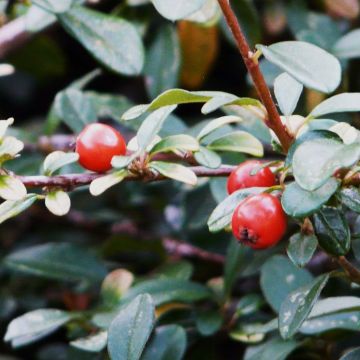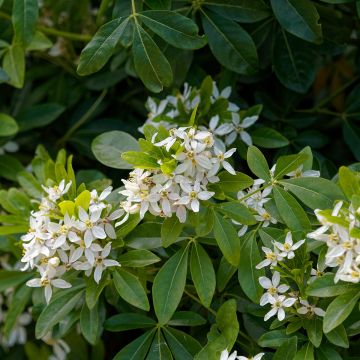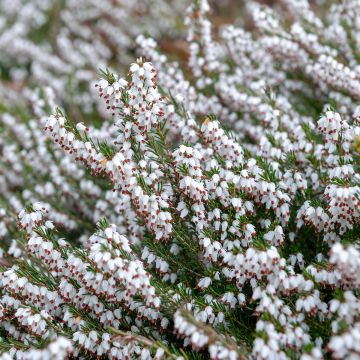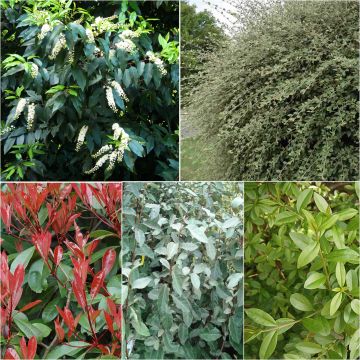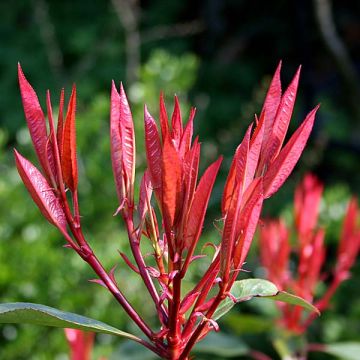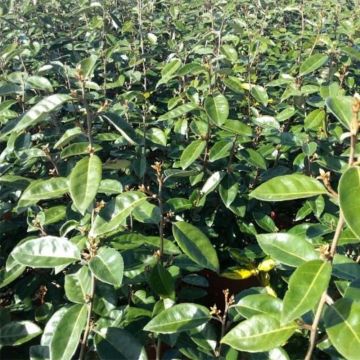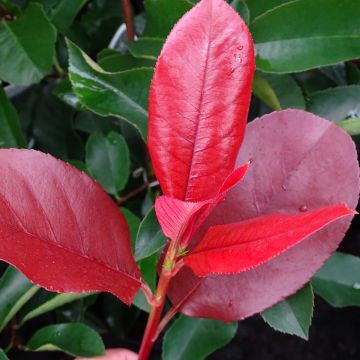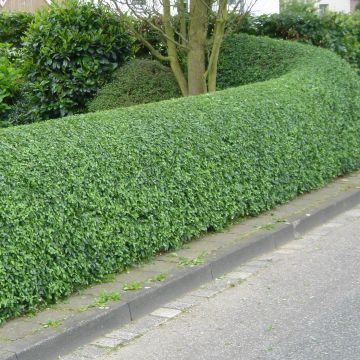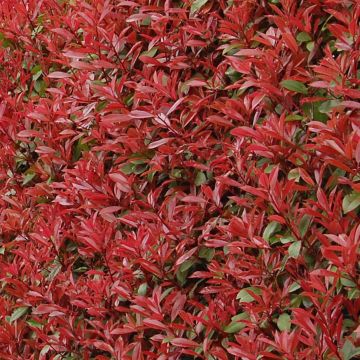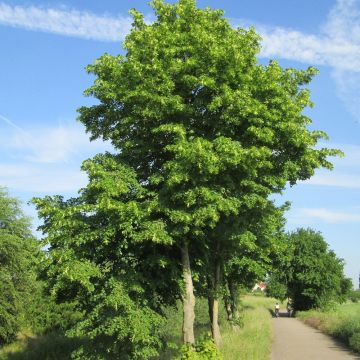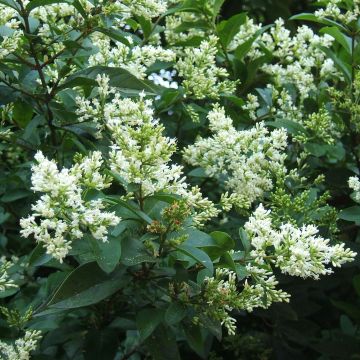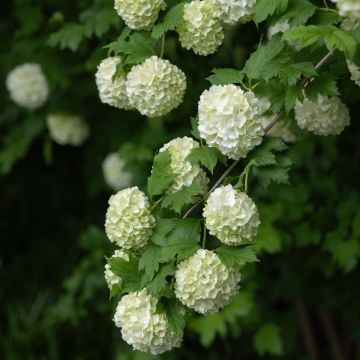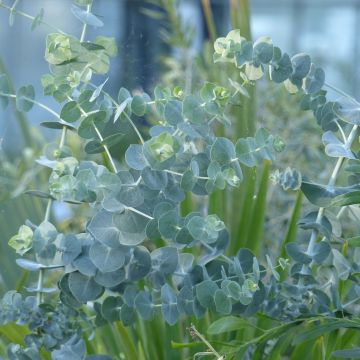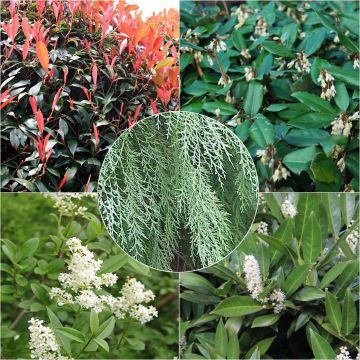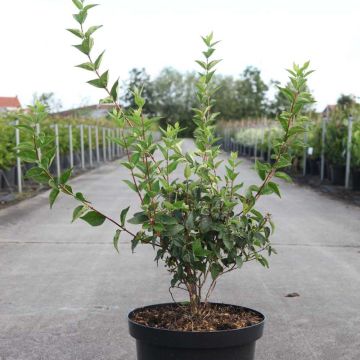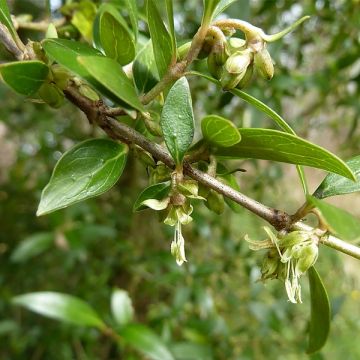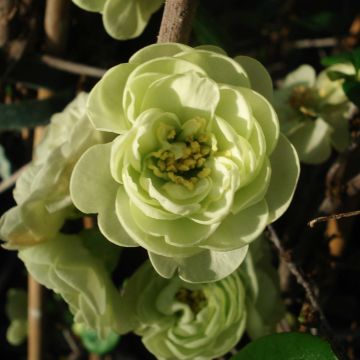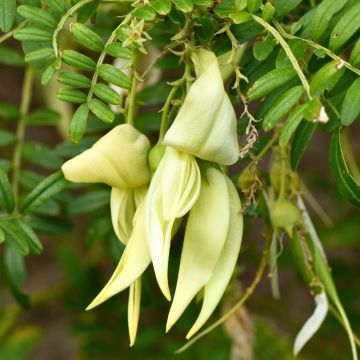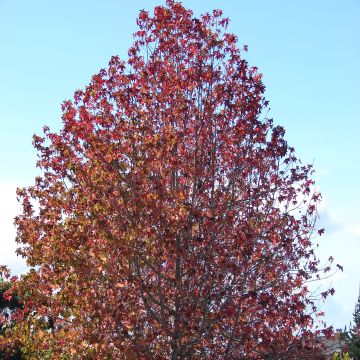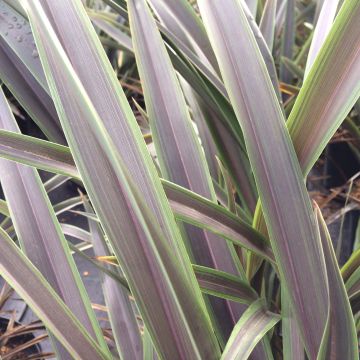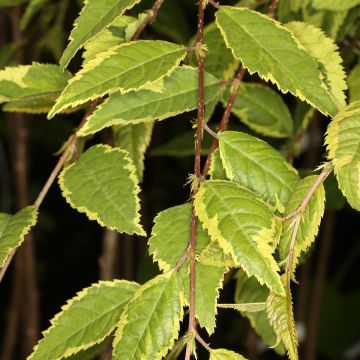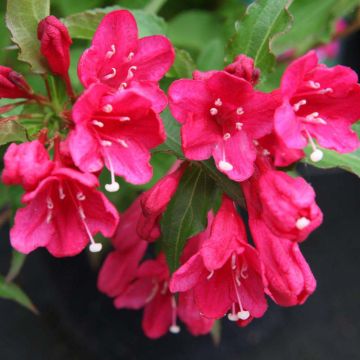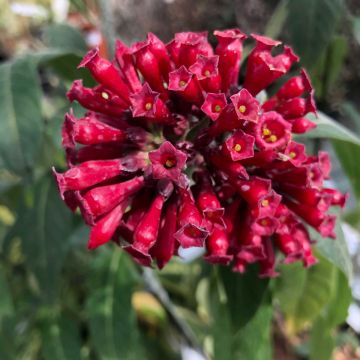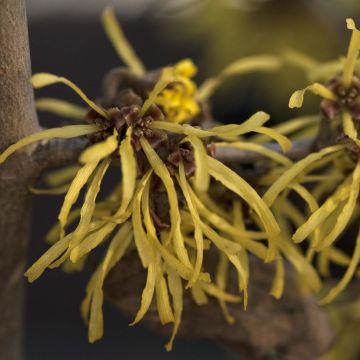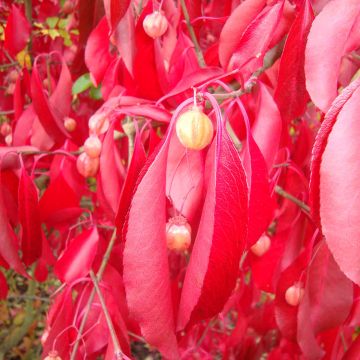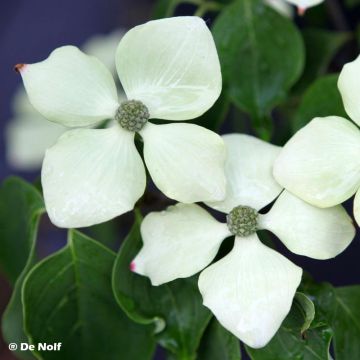Shipping country and language
Your country of residence may be:
Your country of residence is:
For a better user experience on our website, you can select:
Your shipping country:
Andorra
Austria
Belgium
Bulgaria
Canada
Chile
Croatia
Cyprus
Czechia
Denmark
Estonia
Finland
France
Germany
Greece
Hungary
Iceland
Ireland
Italy
Latvia
Lithuania
Luxembourg
Malta
Monaco
Netherlands
Poland
Portugal
Romania
Slovakia
Slovenia
Spain
Sweden
Switzerland
United Kingdom
We only deliver seed and bulb products to your country. If you add other products to your basket, they cannot be shipped.
Language:
French
German
Spanish
English
My Account
Hello
My wish lists
Plantfit
Log in / Register
Existing customer?
New customer?
Create an account to track your orders, access our customer service and, if you wish, make the most of our upcoming offers.
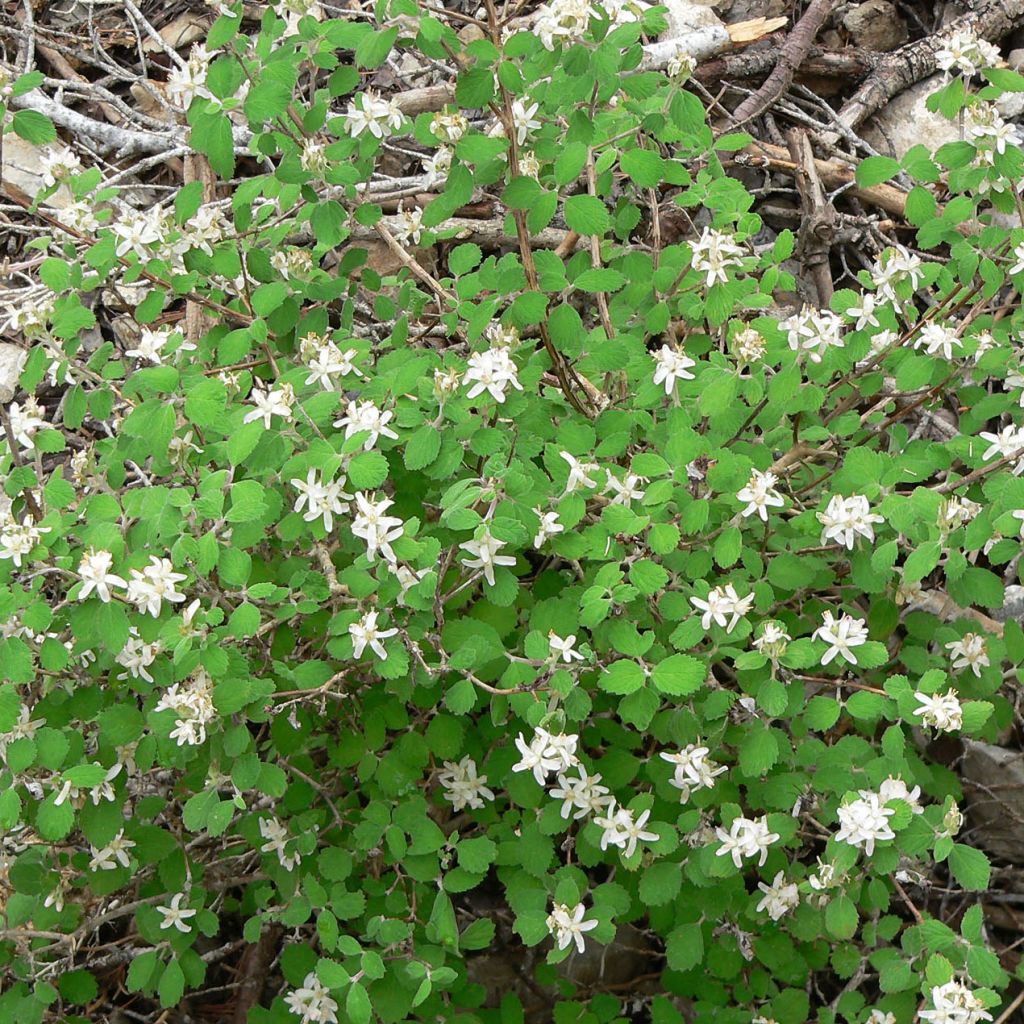

Jamesia americana
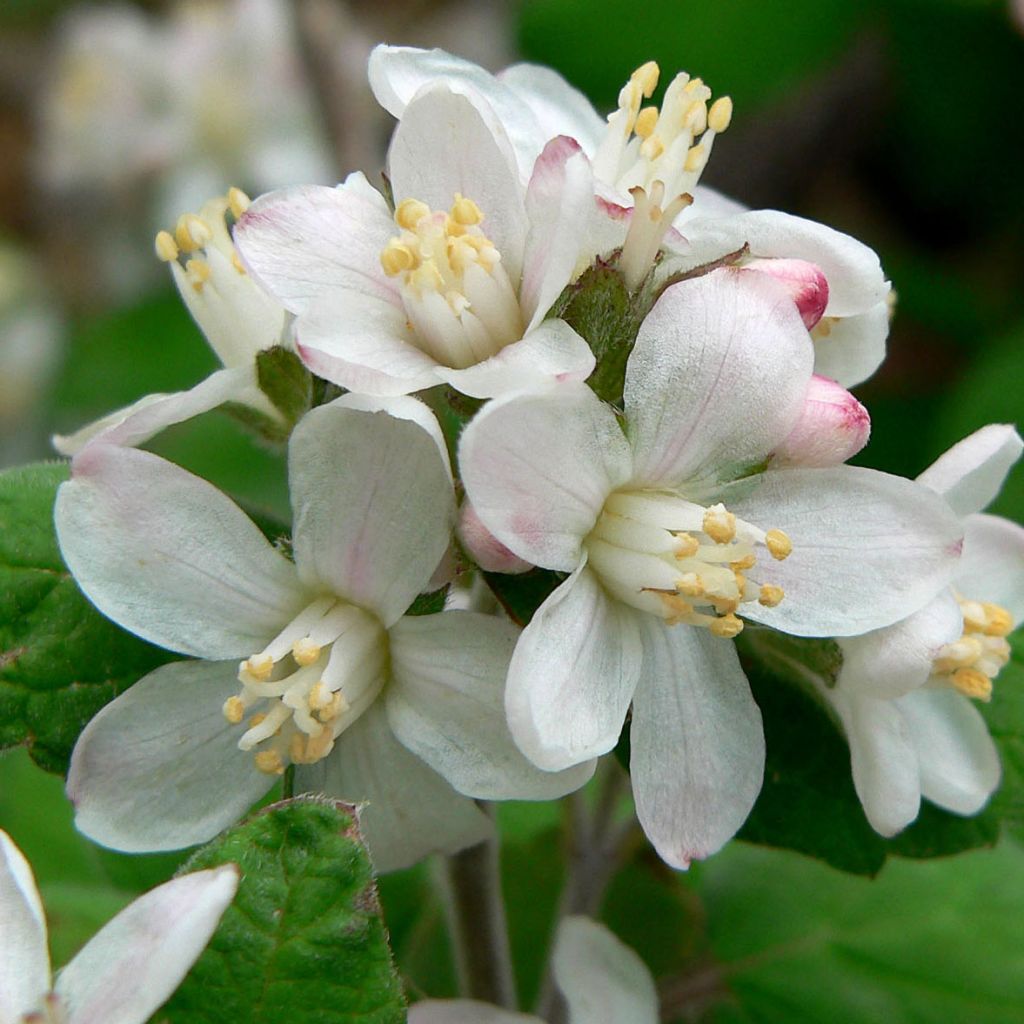

Jamesia americana
Jamesia americana
Jamesia americana
Cliffbush
just starting to sprout leaves
Marie M., 27/04/2017
Why not try an alternative variety in stock?
View all →Order in the next for dispatch today!
Dispatch by letter from €3.90.
Delivery charge from €5.90 Oversize package delivery charge from €6.90.
More information
This item is not available in your country.
Schedule delivery date,
and select date in basket
This plant carries a 24 months recovery warranty
More information
We guarantee the quality of our plants for a full growing cycle, and will replace at our expense any plant that fails to recover under normal climatic and planting conditions.
From €5.90 for pickup delivery and €6.90 for home delivery
Express home delivery from €8.90.
Does this plant fit my garden?
Set up your Plantfit profile →
Description
Still not widespread in our gardens, Jamesia americana is a lovely little deciduous bush, native to the mountains of the western United States. It has a sprawling and bushy habit. It is endowed with beautiful grey-green velvety foliage, reddening in autumn. In spring, it produces an abundance of delicately fragranced pretty white flowers, in small erect terminal panicles. Remarkably hardy, it is ideal for an alpine rockery.
Jamesia americana, belonging to the Hydrangeaceae family, is native to the western United States, where it grows on mountainous and rocky slopes, between 1600 and 3000m (5249 and 9843ft) in altitude. It forms a small deciduous bush 1 to 2.5m (3 to 8ft) high and 2m (7ft) wide, with a bushy and sprawling silhouette. Its thin grey bark peels off revealing its reddish-brown to orange-brown trunk. Its grey-green ovate leaves are velvety and dentate, measuring from 5 to 7cm (2 to 3in) long. The leaves can redden in autumn. From May to June, it produces pink floral buds. The white, starry, slightly fragrant 5-petal flowers are 0.5 to 1cm (0.2 to 0.4in) in diameter, gathered in small erect terminal dense panicles, 3 to 6cm (1 to 2in) long. The flowers give way to fruits in the form of fluffy capsules containing numerous seeds, reaching ripeness at the beginning of autumn, and persisting on the bush all winter.
The name Jamesia was given in honour of the famous botanist, geographer and geologist Edwin James (1797-1861) who discovered, during explorations in the American west, numerous species of alpine flora, notably the blue columbine, Aquilegia caerulea, which became the emblematic flower of the state of Colorado.
Easy to grow, this little mountain bush is extremely resistant to cold and will tolerate frost. It enjoys sunny, warm and sheltered exposures. It tolerates soils rich in limestone. Jamesia americana is perfect in an alpine rockery, alongside other compact plants, such as columbines, pulsatillas, mountain cornflowers, summer asters or alpine blue thistles. It will also be perfectly capable of growing on a slope, with ground-cover bushes, like dwarf juniper, false cypress, or even a Canadian thuya. In a temperate climate, it will prefer partial shade and moist soil. It can be planted alone, or integrated into a shrub or perennial plant bed, with dwarf rhododendrons, deutzia, and daphne.
Jamesia americana in pictures
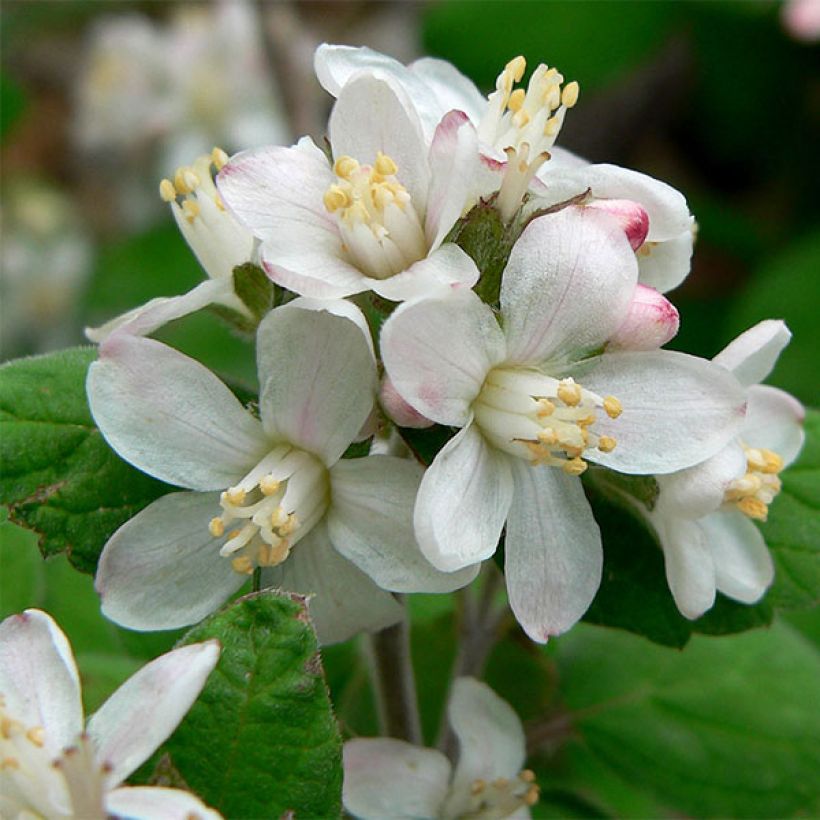

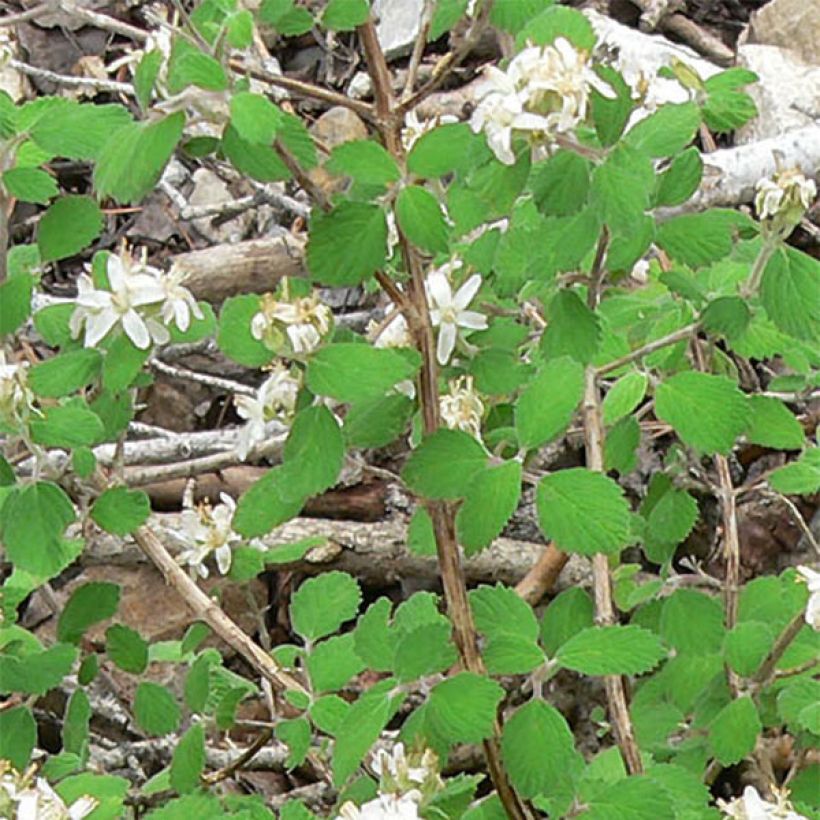

Plant habit
Flowering
Foliage
Botanical data
Jamesia
americana
Hydrangeaceae
Cliffbush
Rocky Mountains
Other Shrubs A to Z
Planting and care
It is undemanding and easy to cultivate. It thrives in full sun, appreciates heat, and even tolerates drought and limestone-rich soil. In a less severe and temperate climate, place it in a semi-shaded to shaded exposure, in rich and moist but well-drained soil. Protect it from cold and dry winds by choosing a sheltered location, along a wall for example. No pruning is necessary except for light maintenance pruning, in February-March, to maintain a beautiful silhouette.
Planting period
Intended location
Care
- , onOrder confirmed
Reply from on Promesse de fleurs
Arbustes à floraison printanière
Haven't found what you were looking for?
Hardiness is the lowest winter temperature a plant can endure without suffering serious damage or even dying. However, hardiness is affected by location (a sheltered area, such as a patio), protection (winter cover) and soil type (hardiness is improved by well-drained soil).

Photo Sharing Terms & Conditions
In order to encourage gardeners to interact and share their experiences, Promesse de fleurs offers various media enabling content to be uploaded onto its Site - in particular via the ‘Photo sharing’ module.
The User agrees to refrain from:
- Posting any content that is illegal, prejudicial, insulting, racist, inciteful to hatred, revisionist, contrary to public decency, that infringes on privacy or on the privacy rights of third parties, in particular the publicity rights of persons and goods, intellectual property rights, or the right to privacy.
- Submitting content on behalf of a third party;
- Impersonate the identity of a third party and/or publish any personal information about a third party;
In general, the User undertakes to refrain from any unethical behaviour.
All Content (in particular text, comments, files, images, photos, videos, creative works, etc.), which may be subject to property or intellectual property rights, image or other private rights, shall remain the property of the User, subject to the limited rights granted by the terms of the licence granted by Promesse de fleurs as stated below. Users are at liberty to publish or not to publish such Content on the Site, notably via the ‘Photo Sharing’ facility, and accept that this Content shall be made public and freely accessible, notably on the Internet.
Users further acknowledge, undertake to have ,and guarantee that they hold all necessary rights and permissions to publish such material on the Site, in particular with regard to the legislation in force pertaining to any privacy, property, intellectual property, image, or contractual rights, or rights of any other nature. By publishing such Content on the Site, Users acknowledge accepting full liability as publishers of the Content within the meaning of the law, and grant Promesse de fleurs, free of charge, an inclusive, worldwide licence for the said Content for the entire duration of its publication, including all reproduction, representation, up/downloading, displaying, performing, transmission, and storage rights.
Users also grant permission for their name to be linked to the Content and accept that this link may not always be made available.
By engaging in posting material, Users consent to their Content becoming automatically accessible on the Internet, in particular on other sites and/or blogs and/or web pages of the Promesse de fleurs site, including in particular social pages and the Promesse de fleurs catalogue.
Users may secure the removal of entrusted content free of charge by issuing a simple request via our contact form.
The flowering period indicated on our website applies to countries and regions located in USDA zone 8 (France, the United Kingdom, Ireland, the Netherlands, etc.)
It will vary according to where you live:
- In zones 9 to 10 (Italy, Spain, Greece, etc.), flowering will occur about 2 to 4 weeks earlier.
- In zones 6 to 7 (Germany, Poland, Slovenia, and lower mountainous regions), flowering will be delayed by 2 to 3 weeks.
- In zone 5 (Central Europe, Scandinavia), blooming will be delayed by 3 to 5 weeks.
In temperate climates, pruning of spring-flowering shrubs (forsythia, spireas, etc.) should be done just after flowering.
Pruning of summer-flowering shrubs (Indian Lilac, Perovskia, etc.) can be done in winter or spring.
In cold regions as well as with frost-sensitive plants, avoid pruning too early when severe frosts may still occur.
The planting period indicated on our website applies to countries and regions located in USDA zone 8 (France, United Kingdom, Ireland, Netherlands).
It will vary according to where you live:
- In Mediterranean zones (Marseille, Madrid, Milan, etc.), autumn and winter are the best planting periods.
- In continental zones (Strasbourg, Munich, Vienna, etc.), delay planting by 2 to 3 weeks in spring and bring it forward by 2 to 4 weeks in autumn.
- In mountainous regions (the Alps, Pyrenees, Carpathians, etc.), it is best to plant in late spring (May-June) or late summer (August-September).
The harvesting period indicated on our website applies to countries and regions in USDA zone 8 (France, England, Ireland, the Netherlands).
In colder areas (Scandinavia, Poland, Austria...) fruit and vegetable harvests are likely to be delayed by 3-4 weeks.
In warmer areas (Italy, Spain, Greece, etc.), harvesting will probably take place earlier, depending on weather conditions.
The sowing periods indicated on our website apply to countries and regions within USDA Zone 8 (France, UK, Ireland, Netherlands).
In colder areas (Scandinavia, Poland, Austria...), delay any outdoor sowing by 3-4 weeks, or sow under glass.
In warmer climes (Italy, Spain, Greece, etc.), bring outdoor sowing forward by a few weeks.
